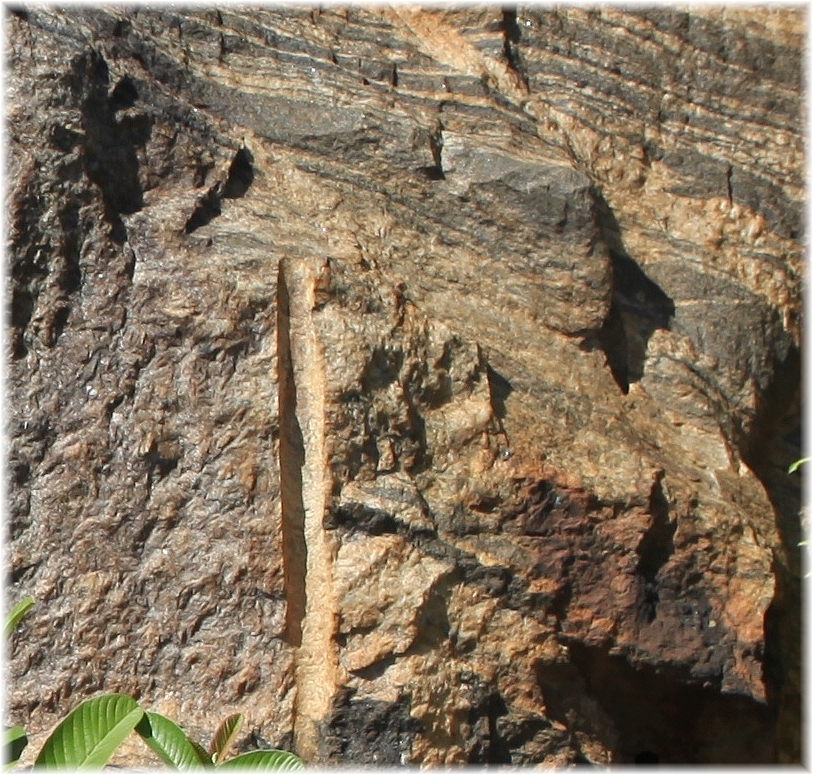
Dr. Kent Condie
Professor Emeritus of Geochemistry
Earth and Environmental Science
- [email protected]
- Office: MSEC 338
- BS, MA University of Utah (1959, 1960)
PhD University of California, San Diego (1965)
About
One of my major areas of active research is the study of the earth's oldest rocks. Such studies take us back to about 4 Ga and into some of the most remote parts of the continents: southern Greenland, South Africa, the deserts of western Australia, and the Arctic areas of Siberia and Canada. Some of the oldest rocks we are currently studying are sedimentary rocks including sandstones, carbonates, and shales and associated volcanic rocks. In the past few years, my graduate students have done field work in such places as South Africa, southern India, and northern China. Our results are exciting and suggest that although plate tectonics probably operated on Earth more than 3 Ga, mantle plume activity was considerably more important in the Archean than it is today. Continents didn't appear until the Earth cooled enough for granite magmas to form, and it appears that the first major period of continental growth was between 3 and 2.5 Ga, when the first supercontinent formed.
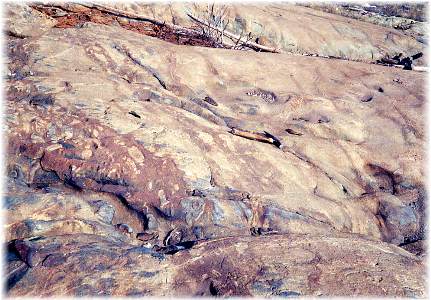
Another important and exciting research problem that we are working on is the composition and evolution of the lower continental crust and mantle lithosphere. Here we work with metamorphic petrologists and geophysicists. Has the upper and lower continental crust grown synchronously through time or have significant volumes of the lower crust been added by magmatic underplating? Are the mantle lithosphere and continental crust coupled and in what tectonic setting did they form? To begin to answer these and related questions, we are geochemically studying xenoliths of the lower crust and upper mantle brought to the Earth's surface during recent volcanic eruptions, in such areas as the Navajo Volcanic Field in the Four Corners area of the Southwest.
Another question of major interest today is the role that mantle plumes may have played in the evolution of our planet. Could the Earth have been more like Mars and Venus during the Archean some 3 Ga? Instead of cooling principally by plate tectonics as it does today, did the Archean Earth cool chiefly by rising mantle plumes? How do we identify the effects of mantle plumes in the geologic record? Did plumes have a role in the growth of continents? Are large mantle plume events recorded in the geologic record, and if so, what were the consequences of these events in terms of our atmosphere, oceans, and biosphere?
When Did Plate Tectonics Begin?
Kent Condie and his graduate students are involved in several studies related to the question on when plate tectonics began on planet Earth. Although geodynamic models support coherent plates throughout Earth history, just when and how plates became negatively buoyant is not yet clear. Part of the problem relates to our uncertainty about the early thermal history of the mantle. Perhaps the most exciting method of tracking plate tectonics through time using modern plate tectonic rock associations and subduction P-T regimes. Clearly the arc assemblage (basalt-andesite-dacite-rhyolite-graywacke and associated minor rock types) is widespread to at least 2 Ga, common to 3 Ga, and is found locally in crust older than 3 Ga. Also, dual thermal regimes (low-P, high-T and high-P, low-T) characteristic of plate tectonics are identified at least to 2.8 Ga and possibly to 3.3 Ga. In addition, collisional orogens are recognized to about 2 Ga and accretionary orogens to ≥ 3.5 Ga. Both types of orogens contain terranes with distinct terrane boundaries.
At New Mexico Tech, we are studying several Archean greenstone belts using geochemical indices to constrain the tectonic settings in which they formed. Results of these studies should be valuable in constraining when modern-style plate tectonics began.
Changes in the Mantle-Crust System at the end of the Archean, 2.7 billion years ago
We are also involved in geochemical studies Precambrian granitoids to better understand the evolution of the continental crust and associated mantle with time. Numerous geochemical changes have been reported to occur near the end of the Archean some 2.5 billion years ago, yet most of these are not well documented. Kent Condie and his graduate students are involved with detailed geochemical and isotopic studies of granitoids on both sides of the Archean/Proterozoic boundary in Colorado, Wyoming, Canada and elsewhere. If verified, geochemical differences across this boundary may indicate fundamental changes in tectonic regime at this time, a conclusion that would be very important in terms of silicate planetary evolution.
Does the Continental Crust form during Global Thermal Pulses, and if so, What is Responsible for these Pulses?
Isotopic ages from the continental crust suggest that it has been extracted from the mantle in short pulses, with a large proportion crust extracted around 2.7 and 1.8 billion years ago. We are currently involved with U/Pb zircon dating of orogenic granitoids and detrital zircons to better monitor crustal growth and understand more fully the processes involved. It is possible to recognize juvenile continental crustal sources using Hf isotopes in detrital zircons, and when coupled with U/Pb zircon ages on the same zircons, we can recognize major periods of continental growth in the geologic past. Kent Condie and his research group are currently involved in age and Hf isotopic studies of zircons from modern stream sediments and from ancient sediments, to better track the extraction rate and geographic distribution of continental growth.
Geology/geochemistry faculty and adjuncts working on Precambrian projects
- Paul Bauer
- Kent Condie
- Matt Heizler
Condie, K.C. and Aster, R.C., 2010. Episodic zircon age spectra of orogenic granitoids: The super-continent connection and continental growth, Precambrian Research, 180:227–236, doi:10.1016/j.precamres.2010.03.008
Herzberg, C., Condie, K., Korenaga, J., 2010. Thermal history of the Earth and its petrological expression. Earth & Planetary Sci. Letters 292, p. 79-88, doi:10.1016/j.epsl.2010.01.022
Condie, K. C., 2013. Preservation and Recycling of Crust during Accretionary and Collisional Phases of Proterozoic Orogens: A Bumpy Road from Nuna to Rodinia. Geosciences 2013, vol. 3, p. 240-261, doi:10.3390/geosciences3020240.
Condie, K. C. and Aster, R. C., 2013. Refinement of the supercontinent cycle with Hf, Nd and Sr isotopes. Geoscience Frontiers vol. 4, p. 667-680, doi.org/10.1016/j.gsf.2013.06.001.
Condie, K. C., 2013. Growth of Continents through time: the ongoing saga. Programme and Abstracts, Building Strong Continents, Portsmouth University 2-4 September, 2013, p. 41.
Condie, K. C. 2013. Thirty years of progress in using geochemistry and geochronology to understand lithosphere formation and evolution, Abstract volume, International Meeting on Precambrian Evolution and Deep Exploration of the Continental Lithosphere, Beijing, China, Oct 7-9, 2013, page 30.
Condie, K. C. 2013. Zircon age peaks: a balance between continental production, preservation and recycling. Geological Society of America Annual Meeting Denver, CO, Oct 27-30, 2013, Session No 91, Paper No. 91-3, GSA Abstracts with Programs 45 (7), p. 237.
O'Neill, C., Lenardic, A. and Condie, K. C. 2013. Earth's punctuated tectonic evolution: cause and effect. Geological Society of London, Special Publication 389 doi 10.1144/SP389.4.
Condie, K. C., 2014. How to make a continent: thirty-five years of TTG research. In: Dilek, Y. and Furnes, H. (editors), Evolution of Archean Crust and Early Life, Modern Approaches to Solid Earth Sciences 7, Springer Science, Dordrecht, p. 179-193.
Condie, K. C. and Davaille, A., 2014. Mantle plumes and the supercontinent cycle. Geological Association of Canada and Mineralogical Association of Canada, Annual Meetings, Fredericton, NB, Canada, May 21-23, 2014, Abstract, Session SY-7.
Condie, K. C., Pisarevsky, S. A., and Korenaga, J., 2014. Is there secular change in supercontinent assemblies? Goldschmidt Conference 2014, Sacramento, CA, June 9-13, 2014, Abstract Volume.
Condie, K. C., 2014. Growth of continental crust: a balance between preservation and recycling. Mineralogical Magazine, vol. 78(3), p. 623-637.
Condie, K. C., Davaille, A., Aster, R. C. and Arndt, N., 2014. Upstairs-downstairs: supercontinents and large igneous provinces, are they related? International Geology Review, doi.org/10.1080/00206814.2014.963170
Condie, K. C., Pisarevsky, S. A., Korenaga, J. and Gardoll, S., 2014. Is the rate of supercontinent assembly changing with time? Precambrian Research, doi.org/10.1016/j.precamres.2014.07.015
Condie, K. C., Arndt, N., and Davaille, A., 2014. Nd isotopes as a test for the episodic growth of continental crust. Geological Society of America Annual Meetings 2014, Vancouver, Canada, Abstract 146-14.
Condie, K. C., Pisarevsky, S. A., Korenaga, J. and Gardoll, S., 2015. Is the rate of supercontinent assembly changing with time? Precambrian Research, vol. 259, p. 278-289.
Condie, K. C., Lee, C-T., Aster, R. C., and van Hunen, J., 2015. Mantle Potential Temperature through time: Constraints from Greenstone Basalts and Komatiites. American Geophysical Union Joint Assembly, Montreal, Quebec, May 3-7, 2015, Abstract T21A-05.
Condie, K. C., 2015. Terrestrial Mantle Domains and Changing Tectonic Settings Through Time. American Geophysical Union Joint Assembly, Montreal, Quebec, May 3-7, 2015, Abstract VGP42A-04.
Vogt, K., Condie, K. C., Ruh, R. and Gerya, T., 2015. Ophiolite obduction in the Precambrian. American Geophysical Union Joint Assembly, Montreal, Quebec, May 3-7, 2015, Abstract T34B-0411.
Condie, K.C., Davaille, A., Aster, R.C., and Arndt, N., 2015. Upstairs-downstairs: Supercontinents and large igneous provinces, are they related? International Geology Review, v. 57(11-12), p. 1341–1348.doi:10.1080/00206814.2014.963170.
Condie, K. C., 2015. Changing tectonic settings through time: Indiscriminate use of geochemical discriminant diagrams. Precambrian Research, 266: 587-591.
Condie, K. C., Cin-Ty Lee, Richard C Aster and Jeroen van Hunen, 2015, Dynamic Earth from Alfred Wegener to today and beyond. Abstract volume, Annual Meeting of DGGV and DMG, 4-7 October, 2015, Berlin. DOI: http://doi.org/10.2312/GFZ.LIS.2015.003.
Condie, K. C., 2015. When did plate tectonics begin? Ten years after the Lander Penrose Conference. Geological Society America Annual Meeting 2015, Baltimore, MD, 1-4 November, 2015, Abstracts with Programs vol. 47, No. 7, Paper No. 287-1.
Condie, K. C. and Shearer, C. K., 2016. Incompatible Element Ratios in Plate Tectonic and Stagnant Lid Planets. Abstract 1058, 47th Lunar and Planetary Science Conference, Woodlands, TX, March 21-25, 2016.
Condie, K. C., Aster, R. C. and van Hunen, J., 2016. A great thermal divergence in the mantle beginning 2.5 Ga: Geochemical constraints from greenstone basalts and komatiites. Geoscience Frontiers, 7: 543-553.
Condie, K. C., 2016. The Onset of Plate Tectonics on Earth: a planet in transition between 2 and 3 Ga. Abstract Volume, Workshop on the Origin and Evolution of Plate Tectonics, Congressi Stefano Franscini, Monte Verita, Locarno, Switzerland, July 17-22, 2016.
Condie, K. C., Arndt, N., Davaille, A. and Puetz, S J., 2016. The Significance of Zircon Age Peaks: Crustal Production or Selective Preservation. American Geophysical Union Fall Meeting 2016, San Francisco, Abstract Volume, ID 119537, Paper Number T53C-01.Bickford, M. E., Condie, K. C., Hanan, B.B., Mueller, P. A. and Kamenov, G. D., 2016. Provenance and depositional setting of the Pinal Schist, SW Arizona and Sonora. Annual Meeting Geological Society of America, September 25-28, 2016, Denver, CO, Paper Number 144-14.
Condie, K. C., 2016. A planet in transition: the onset of plate tectonics between 3 and 2 Ga? Geoscience Frontiers, http://dx.doi.org/10.1016/j.gsf.2016.09.001
Puetz S. J., Condie, K. C., Pisarevsky, S., Davaille, A., Schwarz, C. J. and Ganada, C. E., 2016. Quantifiying the evolution of the continental and oceanic crust. Earth-Science Reviews, 164: 63-83.
Condie, K. C., Arndt, N., Davaille, A. and Puetz, S. J., 2017. Zircon age peaks: production or preservation of continental crust? Geosphere, v. 3, No. 2, doi:10.1130/GESO1361.1
Condie, K. C., Puetz, S. J. and Davaille, A., 2018. Episodic crustal production before 2.7 Ga. Precambrian Research 312: 16-22.
Condie K. C., 2018. A planet in transition: the onset of plate tectonics on Earth between 3 and 2 Ga? Geoscience Frontiers 9: 51-60.
Condie, K. C. and Shearer, C. K., 2018. Zr, Nb, Ta and Th Distributions in terrestrial planets: constraints on early planetary evolution. Abstract, Goldschmidt Conference, Boston, MA, August 12-17, 2018.
Condie, K. C, 2018. Penrose Medal: The evolution of plate tectonics on planet Earth: two lithospheric transitions in the last 4 Gyr. Geological Society of America Abstracts with Programs 50, No. 6, doi: 10.1130/abs/2018AM-316350.
Condie, K. C. and Stern, R. J., 2019. Evidence for a long-lived Stagnant Lid during the Mesoproterozoic. Geological Society of America Annual Meetings Phoenix, AZ, Abstract # 331645.
Puetz, S. J. and Condie, K. C., 2019. Time series analysis of mantle cycles Part I: Periodicities and correlations among seven global isotopic databases. Geoscience Frontiers, vol. 10, p. 1305-1326.
Condie, K. C. and Puetz, S. J., 2019. Time series analysis of mantle cycles Part II: The geologic record in zircons, large igneous provinces and mantle lithosphere. Geoscience Frontiers, vol. 10, p. 1327-1336.
Bickford, M. E., Mueller, P. A., Condie, K. C., Hanan, B. B. and Kamenov, G. D., 2019. Ages and Hf isotopic compositions of detrital zircons in the Pinal schist, southern Arizona, USA: Provenance, tectonic setting, and evidence for pre1.7 Ga crust in SW Laurentia. Precambrian Research, vol. 331, 105374.
Condie, K. C. and Shearer, C. K., 2019. Significance of high field strength and rare earth element distributions in deciphering the evolution of the inner solar system. Geochimica et Cosmochimica Acta, vol. 266: 633-651. doi.org/10.1016/j.gca.2019.05.027.
Tang, M., Lee, C-T., Rudnick, R. and K. C. Condie, 2019. Rapid mantle convection drove massive crustal thickening in the late Archean. Geochimica et Cosmochimica Acta, https://doi.org/10.1016/j.gca.2019.03.039.
Condie, K. C., 2020. Is plate tectonics speeding up? IGCP Supercontinents project. Virtual talk, unpublished abstract, May 28, 2020.
Puetz, S. J. and Condie, K. C., 2020. Applying Popperian falsifiability to geodynamic hypotheses: empirical testing of the episodic crustal/zircon production hypothesis and selective preservation hypothesis. International Geology Review, https://doi.org/10.1080/00206814.2020.1818143.
Condie, K. C., Pisarevsky, S., and Puetz, S. J., 2020. Is plate tectonics speeding up? Geological Society of America Annual Meeting 2020, Abstract 352876, File name 7—6.mp4.
Condie, K. C., 2020. Secular Changes in Mantle Composition as Recorded by Tholeiitic Basalts. American Geophysical Union Annual Meeting, Virtual Poster Session, Paper Number DI020-0008, December 14, 2020.
Condie, K. C., 2021. Revisiting the Mesoproterozoic. Gondwana Research, 100: 44-52, https://doi.org/10.1016/j.gr.2020.08.001.
Condie, K. C. Pisarevsky, S. A. and Puetz, S. J., 2021. LIPs, orogens and supercontinents: The ongoing saga. Gondwana Research, vol. 96, 105-121. https://doi.org/10.1016/j.gr.2021.05.002.
Condie, K. C., 2021. Two Major Transitions in Earth History: Evidence for Two Lithospheric Strength Thresholds. Journal of Geology, vol. 129 (5), 455-473, https://doi.org/10.1086/711141.
Puetz, S. J. and Condie, K. C., 2021. Applying Popperian falsifiability to geodynamic hypotheses: empirical testing of the episodic crustal/zircon production hypothesis and selective preservation hypothesis. Intern. Geology Review 63:15, 1920-1950, DOI:10.1080/00206814.2020.1818143.
Li, M., Puetz, S. J., Condie, K. C. and Olson, P., 2021. The periodicity of mantle plume formation in 3D global geodynamic models and its implications for crustal growth. American Geophys. Union Annual Meetings, New Orleans, LA, December 13-17, 2021, Abstract # 827221.
Johansson, Å., Bingen, B., Huhma, H., Waight, T., Vestergaard, R., Soesoo, A., Skridlaite, G., Krzeminska, E., Shumlyanskyy, L., Holland, M.E., Holm-Denoma, C., Teixeira, W., Faleiros, F.M., Ribeiro, B.V., Jacobs, J., Wang, C.-C., Thomas, R.B., Macey, P.M., Kirkland, C.L., Hartnady, M.I.H., Eglington, B.M., Puetz, S.J., Condie, K.C., 2022: A geochronological review of magmatism along the external margin of Columbia and in the Grenville-age orogens forming the core of Rodinia. Precambrian Research 371, 106463, 43 pp.
Puetz, S. J. and Condie, K. C., 2022. A review of methods used to test periodicity of natural processes with a special focus on harmonic periodicities found in global U–Pb detrital zircon age distributions. Earth-Science Reviews, 224, 103885.
Condie, K. C., Pisarevsky, S. A., Puetz, S. J., Spencer, C. J., Teixeira, W., and Faleiros, F. M., 2022. A reappraisal of the global tectono-magmatic lull at ~ 2.3 Ga. Precambrian Research 376, 106690.
Condie, K. C., Puetz, S. J., Spencer, C. J. and Roberts, N. M. W., 2022. Secular compositional changes in hydrated mantle: The record of arc-type basalts. Chemical Geology 607, 121010.
Roberts, M. W., Salminen, J., Johannsson, A., Mitchell, R. N., Palin, R. M., Condie, K. C., and Spencer, C. J., 2022. On the enigmatic mid-Proterozoic: Single-lid versus plate tectonics. Earth & Planetary Science Letters 594, 117749.
- Invited paper, Third International Conference on Early Mars, Lake Tahoe, May 21-25, 2012, "Early history of the Earth and some possible questions about Mars".
- Co-chair and convener, Session 5D, Recycling of continental crust into the mantle. Goldschmidt Conference, Montreal, Quebec, June 23-30, 2012.
- Co-chair and convener, Session 17.2 Early Earth, July 31, 2012, International Geological Congress, Brisbane, Australia.
- Chair and convener, Session 18.4, Proterozoic Magmatism: Implications for Tectonic Models, August 2, 2012, International Geological Congress, Brisbane, Australia.
- Co-chair and convener, Pardee Symposium P5, Supercontinent Cycles Through Earth History, Geological Society of America Annual Meetings, Charlotte, NC Nov. 3-8, 2012.
- Presented talk entitled "Episodic Ages in Earth History and the Growth of Continental Crust", Dept. of Geosciences, Texas Tech University, May 10, 2013.
- Presented talk entitled "Do we really need Australia/Antarctica as a source for 1.6-1.5 Ga Beltian detrital zircons?" at the Belt Supergroup Meeting in Salmon, ID, July 31-August 4, 2013.
- Presented invited lecture, the Arthur Francis Hallimond Lecture for 2013 at the Mineralogical Society of the UK in Portsmouth, England. It was part of the meeting "Building Strong Continents" from 2-4 September. The title of my talk was "Growth of Continents through Time: the Ongoing Saga".
- Presented talk entitled "Plate tectonics and continental evolution: progress in understanding the early earth", at the Department of Geological Sciences, New Mexico State University, September 18, 2013.
- Presented invited talk, "Thirty years of progress in using geochemistry and geochronology to understand lithosphere formation and evolution" at the International Meeting on Precambrian Evolution and Deep Exploration of the Continental Lithosphere, Beijing, China, October 7-9, 2013. Co-chaired session, Lithospheric Growth and Significance for Precambrina tectonics.
- July 7-20, 2013. Invited lecturer at the CIDER (Cooperative Institute for Dynamic Earth Research) workshop, University of California Berkeley. Gave two lectures: Episodic ages and Continental Growth and 2) Evolution of the early Earth.
- Quoted by Naomi Lubick in Science News (April 6, 2014) in an article dealing with Earth’s plate boundaries.
- Quoted by Tom Parkhill in Goldschmidt Conference press release, June 2014, based on talk given on Supercontinent Cycle speeding up with time.
- Interviewed by Stuart Gary from Australia, quoted on his radio program “Starstuff” June 16, 2014 regarding Goldschmidt talk on June 13; also published on ABC Science Website.
- Extensively quoted in article from August 29, 2014 issue of New Scientist Magazine. Paper by Jeff Hecht entitled “Earth’s tectonic plates have doubled their speed”.
- Co-chair, Session T21A Planetary Thermal History and the Transition of Stagnant Lid to Plate Tectonics, May 5, 2015, Joint Assembly AGU Meetings May 3-7, 2015, Montreal, Quebec, Canada.
- Presented invited talk, “The Onset of Plate Tectonics on Earth: A Planet in Transition between 2 and 3 Ga”, at the Workshop on the Origin and Evolution of Plate Tectonics, July 17-22, 2016, at Congressi Stefano Franscini, Monte Verità, Locarno, Switzerland.
- Co-chair, Session T53C, Secular Change in Earth Processes: Shifting Uniformitarianism II, American Geophysical Union Fall Meeting, San Francisco, 12-16 December, 2016
Condie, K.C., 1976. Plate Tectonics and Crustal Evolution. First Edition, Pergamon Press, Elmsford, N.Y., 289 p.
Condie, K.C., 1981. Archean Greenstone Belts. Elsevier Publishing Co., Amsterdam, 434 p.
Condie, K.C., 1982. Plate Tectonics and Crustal Evolution. Second Edition, Pergamon Press, Elmsford, N.Y., 310 p.
Condie, K.C., 1989. Plate Tectonics and Crustal Evolution. Third Edition, Pergamon Press, Elmsford, N.Y., 476 p..
Condie, K.C. (Editor), 1992. Proterozoic Crustal Evolution. Elsevier Publishing Co., Amsterdam, 537 p.
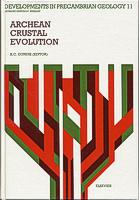
Condie, K. C. (Editor), 1994. Archean Crustal Evolution. Elsevier, Publishing Co., Amsterdam, 528 p.
Condie, K.C., 1997. Plate Tectonics and Crustal Evolution. Fourth Edition, Butterworth-Heinemann, Oxford, UK, 282 p.
Condie, K.C., 1997. Plate Tectonics and How the Earth Works. Interactive CD ROM. Tasa Graphic Arts, Inc., Taos, NM.
Condie, K.C. and Sloan, R. E., 1998. Origin and Evolution of Earth: Principles of Historical Geology. Prentice Hall, Upper Saddle River, NJ, 498 p.
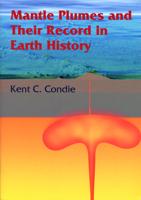
Condie, K.C., 2001. Mantle Plumes and Their Record in Earth History. Cambridge University Press, Cambridge, UK, 305 p.
Preface Excerpt
Although plate tectonics and mantle plumes were introduced to geology at the same
time in the 1960s and early 1970s by J. Tuzo Wilson and Jason Morgan, unlike plate
tectonics, which rapidly collected supporters from the Earth Science community, mantle
plumes took a back seat. It was not until the late 1980s that scientists turned some
of their attention to mantle plumes, and indeed during the 1990s, when mantle plumes
really "became of age," publications dealing with mantle plumes increased exponentially.
I think three things brought mantle plumes to the forefront in the nineties. First
is high speed computers, which allowed scientists to numerically model mantle processes
in reasonable amounts of time with increased accuracy. Second, exciting new data from
the exploration of Mars and Venus suggested mantle plumes and not plate tectonics
were important on these planets. The detailed mapping of the surfaces of both Mars
and Venus by the Pathfinder and Magellan Missions returned superb images of the planetary
surfaces, which showed gigantic volcanoes, rifts, and domal uplifts, none of which
looked like the product of plate tectonics. Geophysical models suggested that many
of these features could be produced by mantle plumes, and in some instances, gigantic
mantle plumes. If mantle plumes were important on Mars and Venus, why not on Earth?
And third, in the late 1990s, the increased precision of seismic tomography allowed
scientists for the first time to begin mapping the Earth's mantle. Truly spectacular
color figures began to appear in Nature and Science, almost on a weekly basis, showing
what some geoscientists had said all along: the mantle is really quite inhomogeneous
and descending slabs probably go all the way to the core-mantle interface. Mantle
plumes such as Hawaii and Iceland really do have very deep roots.
Why did I write a book on mantle plumes? Now seemed a good time to bring together
under one cover a summary of the truly enormous amount of data that have been published,
principally during the 1990s, related to mantle plumes and their role in Earth history.
Not only results for modern mantle plumes, but also for mantle plumes in the geologic
past. Could the Earth have been more like Mars and Venus during the Archean some 3
Ga? Instead of cooling principally by plate tectonics as it does today, did the Archean
Earth cool chiefly by rising mantle plumes? How do we identify the effects of mantle
plumes in the geologic record? Did plumes have a role in the growth of continents?
Are large mantle plume events recorded in the geologic record, and if so, what were
the consequences of these events in terms our atmosphere, oceans, and biosphere?
© Copyright Cambridge University Press 2001
Condie, K. C., 2005. Earth as an Evolving Planetary System. Elsevier Academic Press, Amsterdam, 447 p.
Benn, K., Mareschal, J-C. and Condie, K. C., 2006. Archean Geodynamics and Environments. American Geophysical Union, Geophysical Monograph 164, 320 pp.
Condie, K. C. and Pease, Victoria (Editors), 2008. When Did Plate Tectonics Begin on Planet Earth? Geological Society of America Special Paper 440.
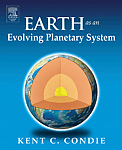
Condie, K. C., 2011. Earth as an Evolving Planetary System. Second Edition. Elsevier Academic Press, Amsterdam, 574 p.
Condie, K. C., 2016. Earth as an Evolving Planetary System. Third Edition. Elsevier Academic Press, Amsterdam, 418 p.
Condie, K. C., 1997. Plate Tectonics and How the Earth Works. Interactive CD ROM. Tasa Graphic Arts, Inc., Taos, NM.
Condie, K. C., 2005. Plate Tectonics and How the Earth Works. Version 2. Interactive CD ROM. Tasa Graphic Arts, Inc., Taos, NM.
Latest Book
Condie, K.C. 2004, 2011, 2016 (1st, 2nd, and 3rd Editions). Earth as an Evolving Planetary System. Elsevier Press, 350 pp., ISBN: 0-12-088392-9.
Earth as an Evolving Planetary System presents the key topics and questions relating to the evolution of the Earth's crust
and mantle over the last four billion years. It examines the role of plate tectonics
in the geological past via geological evidence and proposed plate reconstruction.
Kent Condie synthesizes data from the fields of oceanography, geophysics, planetology,
and geochemistry to examine the key topics and questions relating to the evolution
of the Earth's crust and mantle. This book provides a substantial update to Condie's
established text, Plate Tectonics and Crustal Evolution, 4E. It emphasizes the interactive nature of various components of the Earth system on
time scales of tens to hundreds of millions of years, and how these interactions have
affected the history of the atmosphere, oceans, and biosphere.
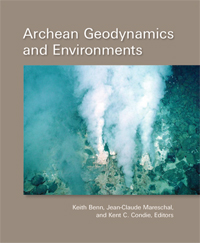
Benn, K., Mareschal, J-C. and Condie, K. C., 2006. Archean Geodynamics and Environments. American Geophysical Union, Geophysical Monograph 164, 320 pp.
The Archean Eon, which represents nearly one-third of Earth's distant past, embraces the formation
and recycling of the first lithosphere and the emergence, growth, and erosion of the
continents. It is to the Archean that we now look to better understand the processes
that shaped the planet as we know it. -- from the Preface
Archean Geodynamics and Environments presents significant aspects of Archean geodynamics in 17 benchmark papers for the
experienced specialist and initiate. Using data from the preserved Archean geological
record and cutting-edge geodynamic and geophysical modeling, the book features discussion
on:
• Global geodynamics and plate tectonics: the Archean thermal regime and the nature
of mantle convection
• Thermomechanical evolution of continents
• Subduction, accretion, and orogeny
• Early environments and the evolution of life
Earth scientists, researchers, and their students -- those who study the origins of our planet from the perspectives of tectonophysics, seismology, volcanology, geochemistry, petrology and more -- will find this work a compelling resource in defining current views, prevailing questions, and future research needs.
Graduate students that worked with me on their graduate research are now employed in a wide variety of jobs across the United States.
Dennis Lee ( [email protected]), who graduated in 2003 with an MS geology, writes the following:
"I operate a computerized logging unit in an offshore environment for Halliburton
Sperry-Sun Drilling Services in Lafayette, Louisiana, with a surprising emphasis on
being a competent network administrator for Windows NT, as well as operating with
the company's in-house software. I also provide clients with accurate and timely data
products and daily written reports. Data include lithology, gamma and resistivity,
gas composition C1 through C5, H2S, interpreted formation pore pressures, observed
drilling parameters, etc. I evaluate all formations penetrated and immediately describe
and report any hydrocarbon shows and monitor all aspects of rig operations and downhole
conditions. I am also responsible for reporting any suspected unsafe conditions and
keeping rig personnel apprised of such conditions."
Patrick Mattie ( [email protected]), who did his thesis with me on lower crustal xenoliths in the Navajo Volcanic field (MS, 1996), is currently a Scientist at Sandia National Laboratories, in Albuquerque, New Mexico. Sandia National Laboratories is a United States Department of Energy National Laboratory providing science-based technologies that support national security. Patrick works in the Nuclear Risk & Technologies Division as a scientist specializing in the assessment of geologic disposal of high-level and low-level nuclear waste. He is a key member of a group evaluating the proposed repository at Yucca Mountain, Nevada and is providing technical guidance to proposed geologic disposal projects in Taiwan and Egypt.
Stephanie Bell ( [email protected]), who studied a Precambrian arc system in western Brazil as her Masters' research (MS, 2000), is currently working for Westinghouse TRU Solutions supporting the National TRU Waste Program in Albuquerque, NM. She provides technical support for the permitting and regulations related to the transportation of transuranic waste from U.S. DOE waste generator/storage sites to the Waste Isolation Pilot Plant (WIPP) in Carlsbad, NM.
Bonnie Frey ( [email protected]), who finished her MS thesis on a possible accreted oceanic plateau in the Proterozoic of Arizona (MS, 2002), is currently working at the New Mexico Bureau of Geology and Mineral Resources on a phytoremediation project intended to clean up waste from depleted uranium testing. The project involves growing, collecting, and chemically analyzing plants from a contaminated site located on M Mountain near Socorro, NM.
Natalie Latysh ( [email protected]), who studied upper crustal xenoliths (Natalie's standing next to one below) from the Four Corners volcanic field as her MS thesis (MS,1997), now works as a hydrologist for the USGS in Denver. She helps administer quality assurance projects for the National Trends Network within the National Atmospheric Deposition Program (NADP/NTN). Her responsibilities include: writing and editing quality assurance reports for the USGS in evaluating national trends in precipitation chemistry; formulating synthetic precipitation samples to assess laboratory and site operator performance; and evaluating variability of precipitation chemistry due to sample collection procedures.

Mark Boryta ( [email protected]), who completed a PhD thesis on the geochemistry of high grade Archean rocks in northern China (PhD, 1997), is now a community college instructor at Mt. San Antonio College in Walnut, CA. Mt SAC is the third largest campus of public higher education in California - larger than most UC and CSU campuses. It serves about 40,000 students each year. Mark teaches oceanography, Earth science, and environmental geology in addition to more traditional geology courses. Most of his students are taking courses for transfer credit - only a few are (or will be) geology majors. Mark says, "this leads to one of the important things that I like about my job: introducing my students to new ways of thinking about the world around them."
Recipient of the Geological Society of America Penrose Medal, 2018
Fellow, Geological Society of America
Distinguished Research Award, New Mexico Institute of Mining & Technology, 1987
Honorary Doctorate: DSc (Honoris Causa), University of Pretoria, South Africa, 2007
Editorial Board Member, Gondwana Research
Editorial Board Member, Precambrian Research
Exceptional Reviewer, Geology, December 2006
Most Cited Paper, Physics of the Earth and Planetary Interiors, 2004-2007, for the paper entitled Supercontinents and superplume events: Distinguishing signals in the geologic record, Vol 146(1-2), 2004, pp 319-332. Citation.
Most Cited Paper, Lithos, 2003-2007, for the paper entitled TTGS and adakites" Are they both slab melts?, Vol 80(1-4 SPEC.ISS), 2005, pp 33-44.
Penrose Medal, Geological Society of America, Indianapolis, November 2018
Regularly the most cited author at New Mexico Tech by ResearchGate
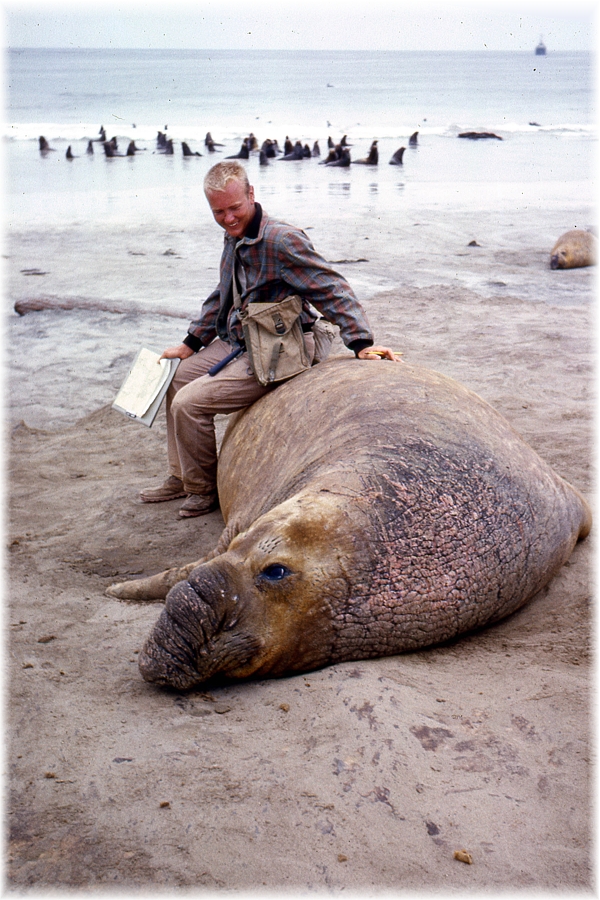
This is how we used to do field geology 50 years ago. I was a grad student at UCSD and we were mapping the geology of the San Benito Islands off west of Baja California. We often attracted an unusual audience.

After many months of planning we finally arrived inSydney, Australia for our 6 months sabbatical leave on June 20 after a long 14 hour flight from LA. I was off to Adelaide within 3 days of arrival to attend the Australian Geological Society meetings and a week-long field trip. Except for the weather, which was often cold and windy, with a bit of rain showers, the field trip was great. We looked at the Delmarian rocks along the southern coast of Australia, and spent two days on Kangaroo Island. Lots of interesting papers at the AGS meetings where a Neoproterozoic supercontinent section and an Archean section ran simultaneously. I gave a paper on the history of Rodinia and various geologic events that may be tied to the formation and breakup of the supercontinent some one billion years ago.
My experience at Macquarie University was great. It has been many years since I actually analyzed samples myself. I was at GEMOC (National Key Centre for the Geochemical Evolution and Metallogeny of Continents) in the Department of Earth & Planetary Sciences, and while there I focused on two major research projects: 1) a study of the distribution of rare earth and high field strength elements (esp. Nb and Ta) in mantle and lower crustal xenoliths, and 2) a search for evidence of juvenile continental crust in the two age gaps on the continents, 1.6-.14 Ga and 2.4-2.2 Ga. My main reason for going GEMOC for my sabbatical was to use their new cutting-edge research equipment including their laser probe ICPMS units, with which one can analyze small (30 micron) spots on minerals for many trace elements as well as radiogenic isotopic ratios, with high degrees of precision. Perhaps the most important finding in the mantle xenolith study is that both the rare earths and high field strength elements are housed primarily in secondary (metasomatic?) phases in cracks and around grain boundaries. Less than 50% of these elements occur in primary mantle minerals (olivine, pyroxenes, spinel, garnet). This is important because these elements are typically used to model the magmatic history of the mantle xenoliths, assuming equilibrium between magma and residual minerals. Our findings, however, indicate that these elements were introduced later, probably in fluid phases.
Our work with zircons was also really exciting. Using a laser probe ICPMS, one can analyze for Pb, U, and Th isotopes and thus date single spots on the zircons. And then using the multicollector laser probe ICPMS, it is possible to determine Hf isotopic ratios in another spot near the spot used to date the mineral. From the combination of U/Pb isotopic age and Hf isotope results, it is possible to estimate the amount of juvenile component (coming directly from the mantle) in the source rocks of the zircons. Although our results are incomplete, because the multicollector unit malfunctioned during the last month of my stay, they indicate for at least one population of detrital zircons from NW Canada that the zircons with ages of 2.2-2.4 Ga are not from juvenile sources, but represent either older reworked crustal sources or mixed juvenile and older crust.
While here in Australia I travelled to Beijing in China to attend the Geological Society of America Penrose conference on Archean high and low grade rocks. Much of the time was spent on a field trip into the Hengshan and Wutai areas to observe high grade and low grade terranes of the North China Archean craton. The rocks and the weather were great, as were the Buddist temples we saw in the Wutai valley. However, as typical of Chinese field trips, the unexpected continually delayed us. On our return from Wutai area to Beijing, we came to a long line of trucks stopped, it turned out the road had been washed out and they trucks had been there for nearly two days! Fortunately, we got the buses turned around and headed back the long way. On this road we came to a washed out bridge and had to take another long detour; we didn't get back to Peking University until nearly 2 AM. After the meetings at the university, about 10 foreign geologists and 15 Chinese geologists visited the controversial Dongwanzi ophiolite, allegedly the oldest know ophiolite in the world (ophiolites are thought to represent ancient fragments of oceanic crust). This site had been described in a paper published in the American Science magazine and had also received attention in the Chinese media (we had reporters with us on the field trip). Again, because of typical travel problems, washed out roads, backed up traffic, road construction, bridge construction, etc., we did not see all of the evidence to support an ophiolite origin. However, what we saw was convincing (sheared harzburgites, podiform chromite) and the isotopic dating indicates an age of 2.5 billion years.
One incident at the site where the bridge over a river was closed is worth describing. The detour involved fording a river, which was possible if one went slowly (the bottom was hard). But our drivers, who typically know nothing about 4-wheel drive vehicles, sped through and one of the vans got water on the spark plugs, and stalled in the middle of the river. After what seemed an endless time, the vehicle was finally pulled out, only to burst into flames. Geologists were abandoning the vehicle rapidly through any and all openings. Bill Collins, an Australian scientist, went under the van and put the fire out, otherwise the whole van would have burned up. Now about 10 Chinese geologists had no place to ride. They managed to talk one of the locals into renting a much smaller van, and we proceeded onwards. On our return, the mayor to Zuhua met the group, let us use 3 new cars, and supervised the fording of the river. This might not seem unusual for the mayor of a small town to personally help, but Zuhua is a city of over half a million people!
The first time I visited China and Beijing was in the early 80s. The changes in the last 20 years are enormous. Beijing is beginning to look more like Hong Kong or Tokyo as skyscrapers are going up all around, freeways criss-crossing the city and big shopping centers. There are many fewer bicycles today and many more cars. I heard that 5000 cars are entering the car pool in China every day! Construction on freeways and buildings goes on 24 hrs/day. Big hotels are everywhere, and tourist buses now frequent all of the interesting places around Beijing. Almost everyone has a cell phone and a TV. Commerce is booming. BUT: this rapid growth is essentially limited to the big cities. In going around the countryside on our field trips, I see no changes in the last 20 years, and in fact, the living conditions of the rural peasants have been the same for hundreds of years. Primitive housing, no plumbing, poor transportation, old putt-putt trucks, donkey-pulled wagons, hand thrashing of grains, lots of manual labor. All the money is going into the cities, and apparently none into the farming and peasant populations.
During the first two weeks of September 2009 I traveled again to China: this time to attend a conference on Continental Tectonics held in Xi’an. Before the meeting I was invited to go into the field with a group from the SHRIMP lab in Beijing (Wan Yusheng) to examine rocks that may fall in the 2.4-2.2 billion year age gap that I had proposed in a paper published earlier in the year. Simon Wilde from Curtin University in Western Australia helped organize the trip. We saw some interesting rocks (mainly sediments and a lot of stromatolitic limestones), but the dating was not sufficient to precisely define their age (somewhere between 2.5 and 2.0 billion years). The weather during the entire trip was not all that good, mostly low clouds and fog mixed with pollution in Beijing and Xi’an. During the pre-meeting field trip we stayed at the golden-domed hotel in Doucun, west of Wutai. Mostly the food was great, we ate in a restaurant that had a lot of fish choices, once my Chinese colleagues found out I didn’t eat red meat. One night one of the restaurants served dried scorpions, something I couldn’t bring myself to even try. The last night (Sept. 5), we had a grand dinner in a special restaurant in Beijing in commemoration of Alfred Kroner’s 70th birthday. Lots of beer, wine and more powerful drinks, and lots of water for me. Surprisingly most of the Chinese restaurants did not have bottled water, so I ended up having to bring my own from the bus.
We left Beijing on September 5 and flew to Xi’an, above the massive cloud bank, actually seeing the Sun! In Xi’an, we stayed and had our meeting at the Shaanxi Guest Hotel, a giant complex built during the Cultural Revolution in the 1950s as a guest house for government dignitaries and, of course, Mao Zedong. During the meeting a group of students from the Northwest University were ready to serve the foreigners for anything we needed. One afternoon (Sept. 7), when the talks were not of much interest to me, I asked the students if one of them might accompany me down town in the old historic part of Xi’an: everyone wanted to go! The young man (Gu Hua) that accompanied me knew the city quite well, we walked on the massive wall around the old city and visited museums as well as climbed the stairs in two major pagodas. Even Xi’an has all the American fast food places. On the evening of September 7, we had the meeting banquet: we were taken to the Sunshine Grand Theatre, a dinner theater in downtown Xi’an. A fantastic show and a great dinner of dumplings (which I generally don’t care for). We had each course of dumplings served separately and 19 different fillings, most of which were great. The production was a musical depicting events in the Tang Dynasty. On the next day during the afternoon, the talks were over, and we took a bus to Museum of the Terracotta Warriors: A fantastic exhibit! We were able to see some of the restoration work still in progress. Presently about 2000 warriors have been restored (no two alike), with at least 6000 more in waiting.
After the meeting I attended the post-meeting field trip to Deng Feng, organized by Anlin Guo. We looked at late Archean greenstones and granites, and visited the Shaolin Temple. This temple looked familiar, and it turns out I visited it several years earlier as part of another geology field trip. This temple and the surrounding area is where Kung Fu was founded, and we saw many groups of boys from the various Kung Fu schools practicing their maneuvers. The highlight of the trip was when our mini-bus got stuck in the mud. We were fortunate that a large truck came along and pulled us out. I have never been on a field trip in China where we didn’t have problems of some type with the vehicles. Once out of the mud, we thought we were home free! Wrong. It turns out the radiator was punctured and leaking water. When about 10 miles from the hotel, the bus stopped, all the water had leaked or boiled out. Our Chinese colleagues called the hotel, who sent out two mini-vans to take us back to the hotel, and a tow truck dragged the bus to a shop to repair the radiator.
All in all it was a great trip and an interesting meeting.
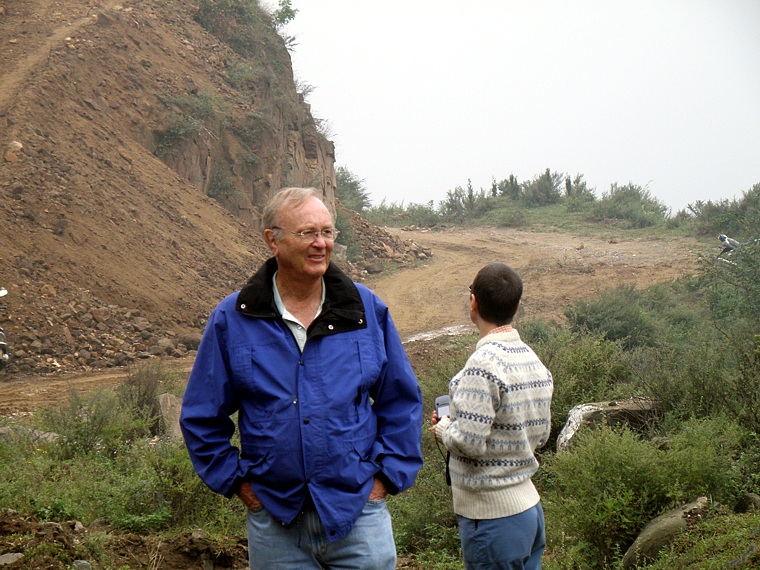
Above: Our recent field trip to examine Archean greenstones in the Dheng Feng area of China. Notice the pig looking out of the little truck, our minibus is stuck in the mud around the corner. Hence, we spent quite a long time looking at this outcrop!
In May of 2010 (16-28 May), I attended a field workshop in South Africa and Swaziland, a great experience but somewhat too long for me these days. Walter Mooney (USGS) was also along and made a video of the trip, which will be played in part on the Discovery Channel sometime in the future. One of the interesting things I decided to do is compare village life in South Africa in 2010 with that in 1973, when I first visited here. Apartheid is of course gone now. Below is a table of comparisons.
|
Things that have Changed |
Things that have not Changed |
|
1. Electricity is now present in many of the African villages. |
1. Most of the villages do not have modern plumbing. |
|
2. On some village houses we saw a few solar cells powering outside lights. |
2. There still are not employment opportunities for young people. |
|
3. The pit toilets are now commonly “cookie-cutter” toilets made of plastic with vent pipes. |
3. In rural areas, women still do most of the work (carrying water and firewood, cooking, washing, yard work, etc.). The men lay around and talk and drink. |
|
4. The crime rates have increased dramatically both in the villages and the cities. |
4. The main source of water is still streams. |
|
5. Satellite discs appear on some village houses (even before modern plumbing). |
5. Village houses are still constructed of plastered rock walls, and roofs are mainly corrugated sheet metal. |
|
6. The government has built new “mini-houses” as subdivisions in the country side, most with indoor plumbing. This reflects an increasing middle class of Africans. |
6. Villagers dry their maize on the roofs and mealymeal is still the main diet. |
|
7. In some of the larger villages green plastic water tanks have been installed, which are filled by trucking in water. Large water storage tanks are appearing in some areas. |
7. A wife is bought for 15-17 cows (12-15 in 1973), and the number of cows you own is the principal measure of wealth. |
|
8. Many of the young people we talked with in rural areas speak perfect English |
8. After an improving high school education, young people cannot afford to go to college and there is very little work for them |
|
9. A parcel of land for a house in the country side can be purchased for as little as one cow (12-15 cows for a wife). |
|
|
10. Car washes are appearing in the country side (hand washing with a hose). Very few people can afford cars, however. |
|
|
11. The clothes people wear are clean and colorful. School uniforms look sharp. |
|
|
12. Education has improved; most people are well informed about national politics and everyday living. |
|
|
13. Cell phones are appearing in the larger towns. |
|
One day Walter Mooney interviewed some local Africans in a village in the Barberton region, when we stopped for our lunches at a road cut. Three men and a child were sitting around talking at a pickup truck (it turns out they ran out of gas). A young man about 19 years old shared his thoughts with us. He spoke excellent English and was well educated, although only through high school. His main concern was that there was no opportunity to further his education (he wants to be a civil engineer), nor are any jobs available in his village. The government is helping only a very small fraction of the blacks to go to college, and most of those qualified to do so, cannot because of lack of funds. Crime rate is on the rise as one expects in villages where most of the men are out of work.
Oldest Rocks in the World
Here is a photo of the oldest rocks in Africa, 3.6 billion years in age. At the left is Alfred Kroner (who originally dated the rocks) and me on the right. (We studied these rocks here at NMT in the 1990s). The outcrop is in the Ancient Gneiss Complex near Piggs Peak in Swaziland.
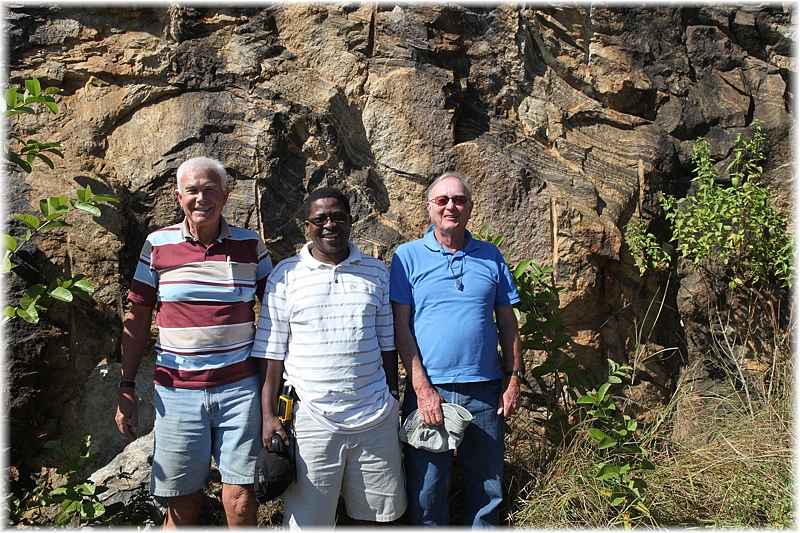
Below is a closeup of the area to the right of Kent.
